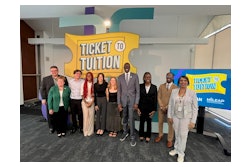Secretary of Education Margaret Spelling’s Commission’s report, “A Test of Leadership: Charting the Future of U.S. Higher Education” denotes much-needed reforms in higher education. The report, which emphasizes that all Americans need access to higher education to thrive in today’s global economy, highlights the needs of the Black, Hispanic and low-income communities, but it fails to address those of American Indians.
American Indians are often ignored in studies and by the media, and when discussed, it is often in a historical context. But American Indians are still here, and culturaland community-based education reforms as seen in the tribal college movement can serve as prototypes for success for other educators. Indian country is a powerful example of how community-based education reform exposes low-income students to higher education, encourages matriculation and transforms the economics of entire communities.
American Indians have the lowest incomes of all ethnic and racial groups in the United States, according to U.S. Census data. More than 25 percent of all American Indians and Alaska Natives live below the poverty line, in contrast with a national poverty rate of 12.4 percent. The gap is even larger for one-third of all American Indians who live on reservations, with 51 percent of the population living below the poverty line. Low incomes and the historic use of education as a tool for forced assimilation have left many distrustful of higher education.
When the Navajo nation created Diné College in 1968 on the reservation to provide higher education to tribal members, it reformed education based on cultural and community needs, giving birth to the tribal college movement. There are now 31 tribal colleges, most of them two-year institutions, in 12 states, providing affordable, culturally based education for students living in remote areas. Several studies have shown that when American Indian students study their native language and traditions along with typical coursework, their test scores improve dramatically. In addition, with Indian faculty serving as teachers and role models, Indian students are less alienated in the classroom, leading to future success when students transfer to four-year institutions. According to a report by the Institute for Higher Education Policy and the American Indian Higher Education Consortium (AIHEC), approximately half of tribal college graduates continued their education, with 86 percent pursuing a bachelor’s degree.
Tribal colleges are accredited institutions offering 400 majors and 180 vocational certificate programs. Nine offer bachelor’s degrees and two offer master’s degrees, while nearly all offer four-year degree programs with other institutions through distance learning. They provide quality education in a variety of subjects, including technology, health care and the liberal arts, while also serving as community centers and centers of entrepreneurship.
A tribal college provides a “whole community” approach to lifelong education, based on the principle that a student does not have to abandon culture or family to obtain an education. The average tribal college student is a 27-year-old single mother of three, and is often a first-generation student, making leaving home untenable and familial support necessary for success. Ninety-one percent of the American Indian College Fund’s scholarship recipients are “non-traditional” students — they have dependents, are older than 24 years of age, and work full time — or have a combination of these characteristics. Students take longer to complete their education when faced with financial and familial demands.
Tribal colleges provide childcare, house libraries, operate computer centers and offer GED and adult education courses, including Native language services for the entire community. Tribal colleges provide health care services in rural areas, which are seeing a loss of vital services as a result of decreasing population. In Poplar, Mont., where a rural community’s only pharmacy closed, Ft. Peck Community College plans to open a pharmacy so community members will not have to drive 70 miles to fill their prescriptions. As one non- Indian community member said, “If it weren’t for the tribal college, we might not have a community.”
Tribal colleges positively impact some of the poorest areas of the country. Indian people, young and old, now see the value of a higher education thanks to education reforms that value their unique heritage, provide Indian role models and offer a place near home to acquire professional skills. The figures speak for themselves: Indian student enrollment at tribal colleges grew by 32 percent from 1997-2002, compared to 16 percent enrollment growth in higher education overall, according to AIHEC. And over the past 25 years, the number of associate to master’s degrees conferred to Native students has doubled. In addition, people like Dr. Ferlin Clark, president of Diné College, are returning home to lead their communities, because, as Clark says, “That is where the good fight is.”
There is still a lot of work to be done. According to the National Center for Education Statistics, 11 percent of American Indian/ Alaska Natives received a bachelor’s degree versus 31 percent for the total U.S. population in 2000. American Indians are still here. We are leading the way in education reform for our children and our future as rightful partners in America’s future. And the revolution is just getting started.
Richard B. Williams is president and CEO of the Denver-based American Indian College Fund.
There are currently 0 comments on this story.
Click here to post a comment
© Copyright 2005 by DiverseEducation.com


















